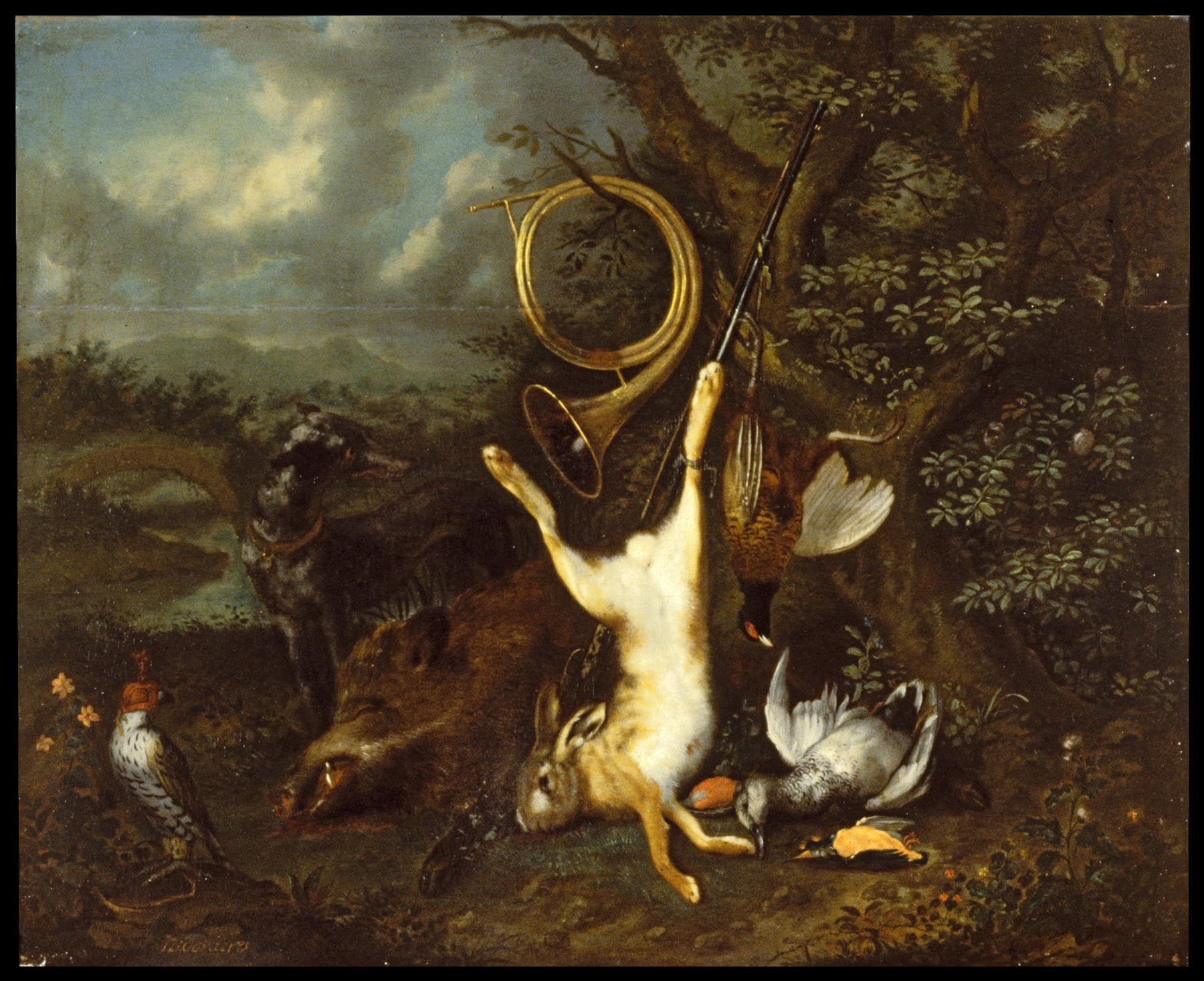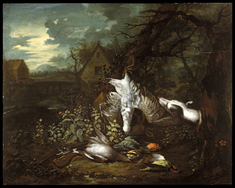Still Life with Dead Game
(18th and 19th Centuries )
Hunting was a major pastime of the nobility, and paintings of the hunt were popular. By the late 1600s, scenes that captured the excitement of the chase or kill gave way to representations of the hunter's trophies, guarded by his dog, presumably while a meal was being served in the field. Hunting wild boar was restricted to the nobility, as was hunting with a falcon, here hooded, as it would have been when out of its cage before being released to go after a heron or other prey.
The tactile appeal of the rabbit's fur or the pheasant's feathers is enhanced by the refined brushwork, rendering minute details and subtle contrasts of texture.
Provenance
Provenance (from the French provenir, 'to come from/forth') is the chronology of the ownership, custody, or location of a historical object. Learn more about provenance at the Walters.
Don Marcello Massarenti Collection, Rome, no. 620; Henry Walters, Baltimore, 1902, by purchase; Walters Art Museum, 1931, by bequest.
Exhibitions
| 1994 | Artful Dining: The Exhibition. The Walters Art Gallery, Baltimore. |
| 1980 | Salute to Belgium. The Walters Art Gallery, Baltimore. |
Geographies
Belgium, Antwerp (Place of Origin)
Measurements
14 5/16 x 17 15/16 in. (36.3 x 45.5 cm)
Credit Line
Acquired by Henry Walters with the Massarenti Collection, 1902
Location in Museum
Charles Street: Second Floor: 17th-Century Dutch Cabinet Rooms
Accession Number
In libraries, galleries, museums, and archives, an accession number is a unique identifier assigned to each object in the collection.
In libraries, galleries, museums, and archives, an accession number is a unique identifier assigned to each object in the collection.
37.1900



